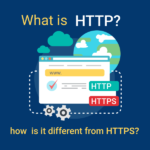IT Security – Also known as information security, is the practice of protecting computer networks, systems, applications, and data from unauthorized access, theft, damage, or disruption. It involves a variety of technologies, processes, and practices that work together to secure the confidentiality, integrity, and availability of information.
Here are some of the key aspects of IT security:
1 .Risk Management: IT security professionals identify and assess potential risks to the organization and develop strategies to mitigate or manage them. This involves conducting risk assessments, developing policies and procedures, and implementing security controls to minimize the risk of security incidents.
2 .Strong Passwords: Use strong passwords or passphrases that include a mix of upper and lower case letters, numbers, and symbols. Passwords should be at least 8 characters long and should be changed regularly.
3 .Multi-Factor Authentication (MFA): MFA provides an additional layer of security by requiring users to provide multiple forms of identification, such as a password and a security token or fingerprint, to gain access to sensitive data or systems.
4 .Encryption: Encryption is the process of converting data into a code that can only be read by someone with the proper decryption key. This is important for protecting sensitive data, such as personal information or financial data, when it is transmitted over the internet or stored on a device.
5 .Network Segmentation: Network segmentation is the process of dividing a network into smaller, isolated segments to limit the impact of a security breach. This helps to prevent attackers from moving laterally across the network to access sensitive data or systems.
6 .Regular Updates and Patches: Regularly update all software and systems to ensure they have the latest security patches and updates. This helps to protect against known vulnerabilities and exploits.
7 .Regular Backups: Regularly back up all critical data to ensure it can be recovered in the event of a security incident or system failure.
8 .Security Awareness Training: Provide regular training and education to employees to raise awareness of security risks and best practices for protecting sensitive data.
9 .Incident Response Planning: Develop and test an incident response plan to quickly and effectively respond to a security incident. This helps to minimize the impact of a security breach and reduce the time it takes to recover.
10 .Security Audits: Regularly conduct security audits to identify and address potential security risks and vulnerabilities in the organization’s systems, processes, and policies.
11 .Compliance with Regulations: Ensure compliance with applicable regulations and standards, such as the General Data Protection Regulation (GDPR) or the Payment Card Industry Data Security Standard (PCI DSS), to protect sensitive data and avoid regulatory fines or penalties.
12 .Least Privilege: Use the principle of least privilege to limit the access and permissions of users and applications to only what is necessary to perform their specific job functions.
13 .Access Controls: Implement access controls, such as role-based access control, to ensure that users only have access to the data and systems they need to perform their job functions.
14 .Vulnerability Scanning: Conduct regular vulnerability scans to identify potential vulnerabilities and security risks in the organization’s systems and applications.
15 .Penetration Testing: Conduct regular penetration testing to simulate real-world attacks and identify potential security weaknesses in the organization’s systems and applications.
16 .Security Information and Event Management (SIEM): Use SIEM tools to collect and analyze security-related data from a variety of sources to identify potential security threats.
17 .User and Entity Behavior Analytics (UEBA): Use UEBA solutions to monitor and analyze user behavior to detect potential security threats, such as insider threats or unusual behavior.
18 .Mobile Device Management (MDM): Use MDM solutions to manage and secure mobile devices, such as smartphones and tablets, that are used to access the organization’s systems and data.
19 .Data Loss Prevention (DLP): Use DLP solutions to prevent data loss or theft by monitoring, detecting, and blocking sensitive data as it is transmitted or accessed.
20 .Cloud Security: Implement appropriate security controls, such as encryption and access controls, to protect data and systems that are hosted in the cloud.
21 .Cyber Insurance: Consider cyber insurance to help mitigate the financial impact of a security breach or data loss. Cyber insurance can provide coverage for costs such as data recovery, legal fees, and regulatory fines.






